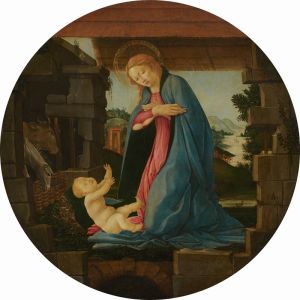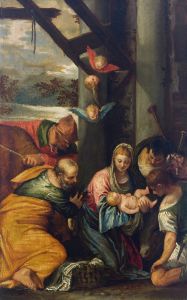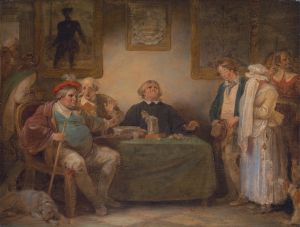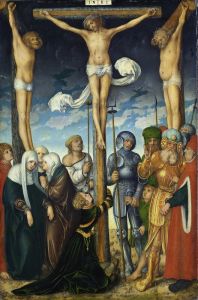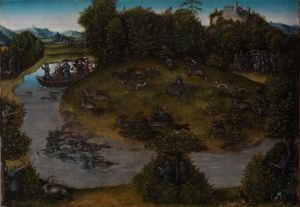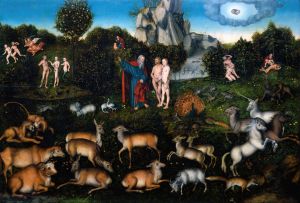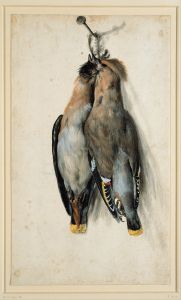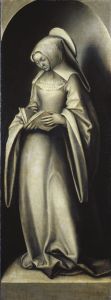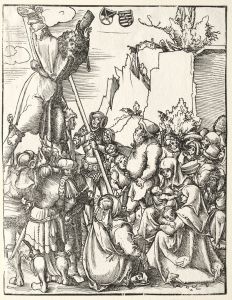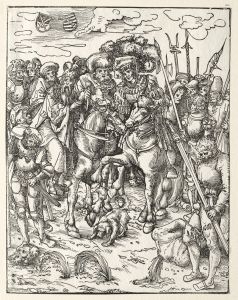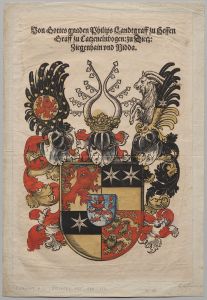
The Holy Family and Kindred
A hand-painted replica of Lucas Cranach the Elder’s masterpiece The Holy Family and Kindred, meticulously crafted by professional artists to capture the true essence of the original. Each piece is created with museum-quality canvas and rare mineral pigments, carefully painted by experienced artists with delicate brushstrokes and rich, layered colors to perfectly recreate the texture of the original artwork. Unlike machine-printed reproductions, this hand-painted version brings the painting to life, infused with the artist’s emotions and skill in every stroke. Whether for personal collection or home decoration, it instantly elevates the artistic atmosphere of any space.
Lucas Cranach the Elder, a prominent German Renaissance painter, created "The Holy Family and Kindred," a work that exemplifies his distinctive style and thematic focus. Cranach was known for his ability to blend religious themes with the emerging Renaissance ideals, and this painting is a testament to his skill in portraying sacred subjects with a human touch.
"The Holy Family and Kindred" depicts the Holy Family, which traditionally includes the Virgin Mary, Saint Joseph, and the infant Jesus. In this particular work, Cranach expands the scene to include extended family members, often referred to as the "kindred" of the Holy Family. This inclusion reflects a broader interpretation of familial ties within the context of Christian iconography, a theme that was not uncommon in the art of the Northern Renaissance.
Cranach's painting style is characterized by its attention to detail, vibrant colors, and the use of fine lines, which are evident in this work. The figures are often depicted with elongated proportions and serene expressions, a hallmark of Cranach's approach to religious subjects. The composition of the painting is carefully arranged to draw the viewer's eye towards the central figures, creating a sense of intimacy and reverence.
The setting of the painting is typically a domestic or pastoral scene, which serves to humanize the divine subjects and make them more relatable to the viewer. This approach was part of a larger trend during the Renaissance, where artists sought to depict religious figures in more accessible and familiar environments. Cranach's use of landscape and architectural elements in the background further enhances the narrative and provides context for the figures.
Cranach was a contemporary of other great Renaissance artists such as Albrecht Dürer and was deeply influenced by the cultural and religious changes of his time, including the Protestant Reformation. His close association with Martin Luther and the Protestant movement is reflected in his art, which often includes subtle theological messages and reflects the changing attitudes towards religious imagery.
The painting is also notable for its use of symbolism, a common feature in Cranach's work. Various elements within the painting, such as the positioning of the figures, their gestures, and the objects they hold, often carry deeper meanings related to Christian theology and the virtues of the Holy Family.
"The Holy Family and Kindred" is an excellent representation of Cranach's ability to merge traditional religious iconography with the evolving artistic styles of the Renaissance. His work remains influential, and this painting, in particular, is a valuable piece for understanding the intersection of art, religion, and culture during this period.
While specific details about the provenance or current location of "The Holy Family and Kindred" may not be readily available, Cranach's works are held in high esteem and can be found in major art collections and museums around the world. His contributions to the art world continue to be studied and appreciated for their technical skill and their ability to convey complex religious themes in a manner that resonates with viewers across centuries.





